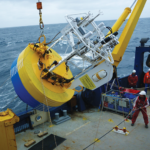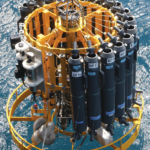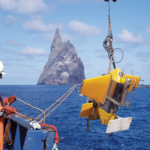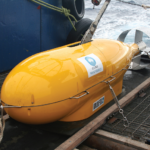Opportunities onboard Australia’s new research vessel Investigator
Poster by Melita Keywood and Sarah Lawson
Construction of Australia’s new ocean-going research vessel, RV Investigator is currently underway, and on its completion in 2013 will provide opportunities for international collaboration in marine and atmospheric research. 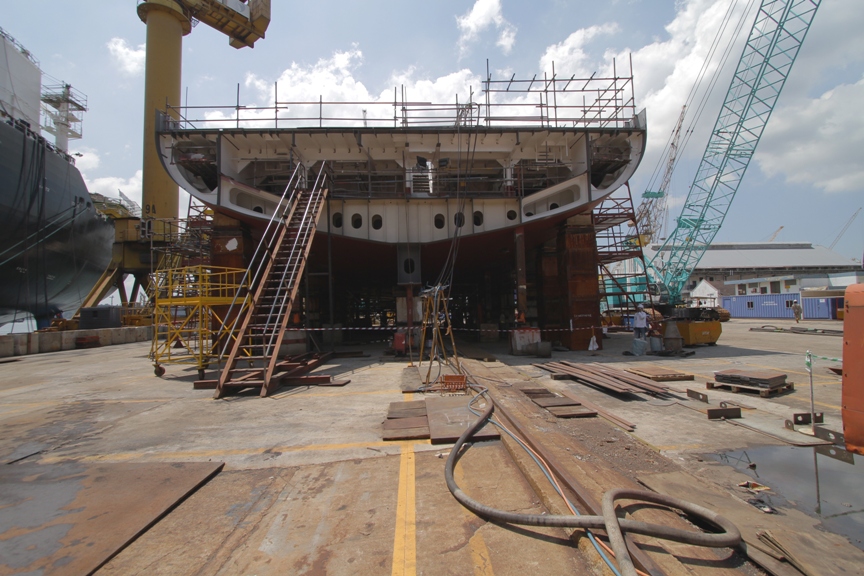
Construction of RV Investigator
In May 2009 the Australian Government allocated $120 million for a new ocean-going research vessel to replace the current Marine National Facility Research Vessel, the 66-metre Southern Surveyor.
The new vessel is being designed, built and commissioned by CSIRO through the Future Research Vessel Project, an initiative of the Australian Government being conducted as part of the Super Science Initiative and financed from the Education Investment Fund.
The new vessel, RV Investigator, will be owned and managed by CSIRO. Its operation will be guided by an independent steering committee and funded by the Australian Government to support voyages mounted by Australian scientists and their overseas collaborators.
 Overview
Overview
Length Overall 93.9 m
Beam 18.5 m
Draft 5.7 m
Classification +100A1, +LMC, UMS, Ice 1c, IWS, EP, Research Vessel, DP1 (AM), DnV Silent-R
Crew 18 (TBC)
Science Berths 40
Endurance 60 days
About the vessel
RV Investigator will operate from the tropical north to the Antarctic ice-edge and across the Indian, Southern, and Pacific oceans, greatly improving Australia’s capacity to:
- investigate and understand marine geological processes;
- detect and predict changes in the ocean environment and their implications for weather and climate; and
- characterise and manage marine ecosystems, biodiversity and fisheries.
 Atmospheric research on board RV Investigator
Atmospheric research on board RV Investigator
RV Investigator will have a two dedicated laboratories for atmospheric research:
- Aerosol laboratory located at the bow of the ship
- Air chemistry laboratory adjacent to the foredeck
Air will be drawn into the laboratories via an aerosol sampling mast (part of foremast) with an inlet located 24 m above the sea surface, which point into the direction of the wind (Bates et al. 2002).
Various instruments will be mounted on the foremast for the measurement of sea-air fluxes and a weather radar will compliment the range of detailed meteorological observations that will be routinely made.
Sites for two containers on the foredeck will supply laboratory space for intensive measurement campaigns.
Atmospheric research on board the RV Investigator will take the form of “routine” climate tracking observations and mission driven campaign experiments.
Collaboration with international researchers is strongly supported by the Marine National Facility.
Opportunities for collaboration
RV Investigator offers the opportunity to sample, observe and measure the atmosphere in one of the most under sampled areas of the world. The Marine National Facility (MNF) Steering Committee calls for applications for sea time annually and encourages applications for national and international collaborative projects.
- Southern Ocean Flux Station (SOFS) buoy.
- CTD – conductivity, temperature, depth profiling instrument.
- CSIRO Marine and Atmospheric Research Seasoar.
- Remotely Operated Vehicle (ROV) is MUFTI-2 Multiple Frequency Towed Instrument

